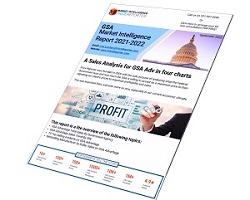Let’s talk about TAA compliance once again. This regulation raises a lot of questions over and over, and we still receive requests from potential MAS contract holders to hear more about TAA compliance and how to maintain it. So, here we are.
What is TAA Compliance?
- What is TAA Compliance?
- Understanding TAA Compliance
- TAA compliant countries
- Non-TAA compliant countries
- What is TAA certification?
- How to manage TAA compliance?
First things first: what is TAA compliance? What does it mean to be TAA compliant, for either a company or a specific product?
“TAA” stands for Trade Agreements Act, specifically 19 U.S.C. & 2501-2581 introduced in 1979. The Act had two purposes:
- To foster international trade, because TAA somewhat overrides the requirements of the Buy American Act and allows the government to purchase non-U.S. originating products;
- To limit international procurement by products that are manufactured (or substantially transformed) in designated countries, not just the United States. We’ll get to this “substantially transformed” thing shortly.
This means that if you want to sell a product to the government (or are already doing it) through your GSA Schedule, this product must be TAA compliant.
Understanding TAA Compliance
Here is a simple TAA compliance check: a product is considered TAA compliant if it meets one of the following criteria:
- The product must either be fully manufactured or have at least 50% of its components originate in the U.S. or in one of the TAA-compliant countries.
- The product must be substantially transformed in the U.S. or in one of the TAA-compliant countries.
When it comes to “manufactured”, everything seems very clear. But what is “substantially transformed”? In our experience, this definition sounds very confusing to most GSA MAS contract holders.
Substantial transformation means the product was changed significantly in terms of its main purpose, functionality, or user experience. If the transformation didn’t lead to any of these, it is considered non-substantial. A simple example of a non-substantial modification is putting your own label to the imported product.
TAA compliant countries
The complete and most current list of TAA-designated countries can be found here. Overall, there are more than 100 TAA compliant countries that are divided into several categories. A country that falls into at least one category is a TAA compliant country.
- A World Trade Organization Government Procurement Agreement (WTO GPA) country. This category includes such countries as the United Kingdom, Germany, Italy, Japan, or Taiwan.
- A Free Trade Agreement (FTA) country. This category encompasses such countries as Bahrain, Singapore, or Panama.
- A least developed country. Countries in this category are Afghanistan, Liberia, Senegal to name a few.
- A Caribbean Basin country. The category includes such countries as Bahamas, Barbados, Curacao, or Jamaica.
If a product is either manufactured or substantially transformed in one of these TAA compliant countries, it is also deemed TAA compliant. Note, however, that TAA compliance of countries is subject to change. Previously compliant regions may become non-compliant for political or economical reasons.
Non-TAA compliant countries
A product manufactured in a non-TAA compliant country cannot be procured. Federal agencies are not allowed to purchase such products, and exceptions are very rare. Moreover, selling a product originating from a non-TAA country violates TAA compliance requirements and may cause cancellation of the GSA contract. That is why every GSA reseller must make sure its products come from designated countries only to mitigate risks of losing the entire GSA Schedule contract.
Non-TAA compliant countries (as of 2022) are: Russia, India, China, Pakistan, Malaysia, Indonesia, Iraq, Iran, Brazil, and Sri Lanka.
What is TAA certification?
Technically, there is no such thing as obligatory Trade Agreements Act certification. Official TAA certification is a myth, since it is GSA contractors’ responsibility to ensure and maintain TAA compliance of the entire inventory it sells to the government and offer via GSA Schedule proposal on the GSA Advantage platform.
At the same time, there is a scope of actions that should be done in order to achieve TAA compliance. This may be called “TAA certification, ” which people usually have in mind. Many companies perform TAA certification in-house, using their own specialists. For a small business such manual self-certification is fine.
However, if your inventory includes thousands of items, checking every one of them (and its parts!) against TAA compliance can take a lot of time. Indeed, you will need to track the exact supply and manufacturing chain for each product and request corresponding confirmation documents from manufacturers to make sure the product was manufactured or substantially transformed in one of the designated countries (see above).
In case of a larger inventory, it is advisable to hire a GSA consultant, an individual or a company that aims to help businesses win a GSA Schedule, and then manages the contract on behalf of the client. Such management includes TAA compliance certification and verifying TAA compliance.
How to manage TAA compliance?
Well, there is actually only one major aspect to maintain, but an important one, at that. Your goal is to make sure every product you sell to the government service is compliant. This means you must make sure every such product is manufactured (at least 50% of the product’s value) or substantially transformed in the U.S. or one of the designated TAA countries.
Specifically, this means that you must request from manufacturers any documentary proof that the product’s country of origin is TAA compliant. Examples of such documents are a certificate of origin, a letter from the manufacturer, quality assurance documents, and so on. Note that software products are also subject to TAA compliance regulation.
Needless to say, TAA compliance is highly dependent on the exact supply chain. Whenever some part of a product becomes non-compliant for some reason, the entire product containing this part may also become non-compliant . You need to communicate with manufacturers and resellers to maintain TAA compliance on a constant basis.
If you think of getting a GSA contract today, or already have one and want to make sure you are TAA compliant, please don’t hesitate to contact Price Reporter. We are ready to guide you through every single pitfall of TAA compliance and GSA contract management.








